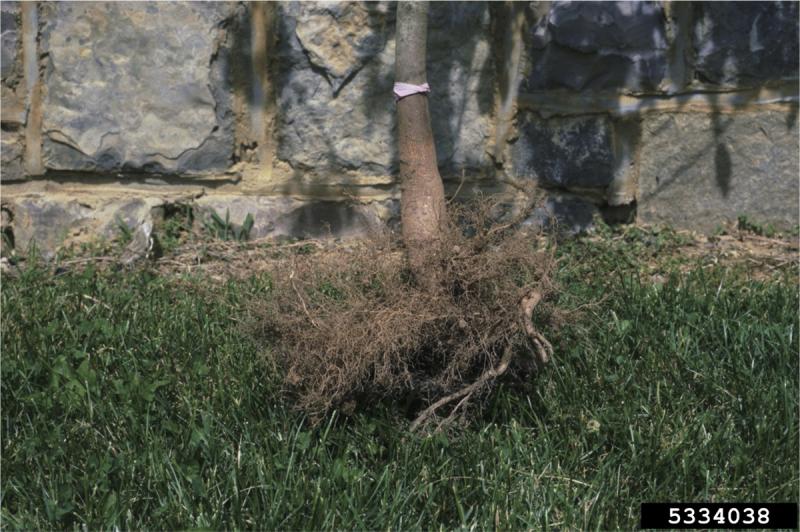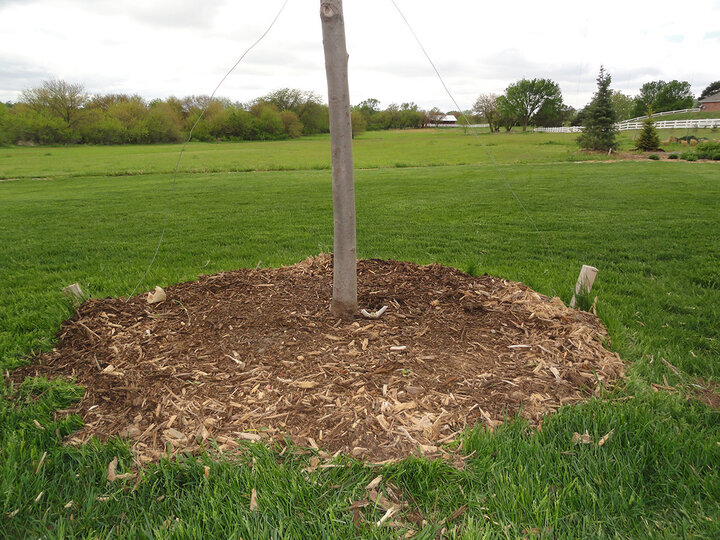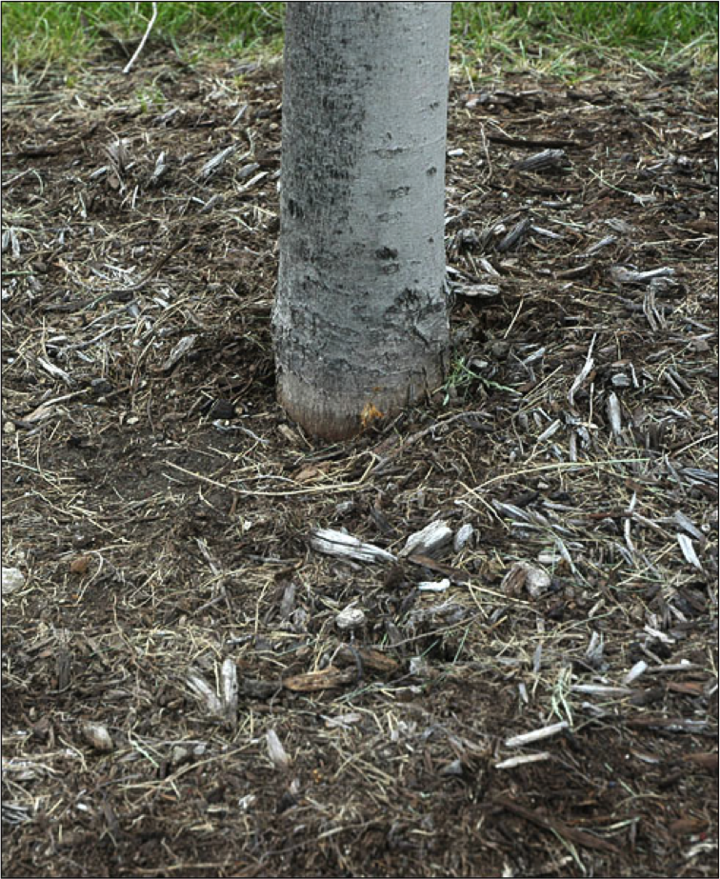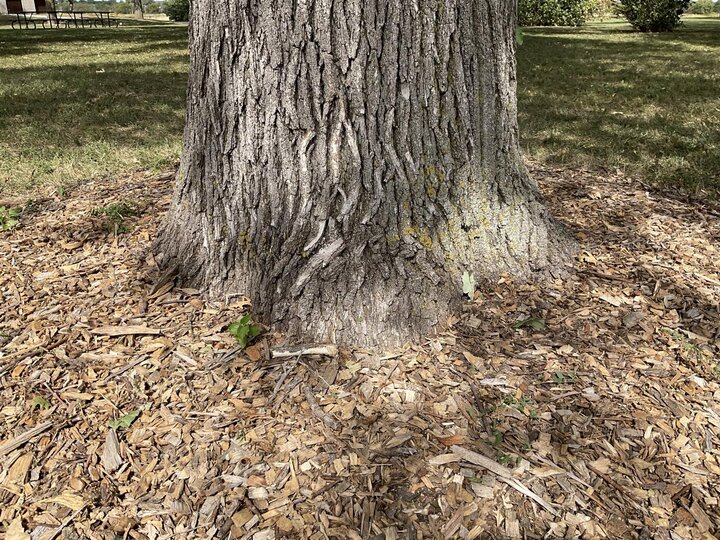Sarah Browning, Nebraska Extension Educator

Tree planted 8+ too deep in field. Plastic tape marks the original planting depth. Image by Mary Ann Hansen, Virginia Polytechnic Institute and State University, Bugwood.org.
Planting depth was not recognized as a major tree health problem until recent years. But foresters and nurserymen now know that if a tree's root system is buried too deeply in the soil overall root growth is reduced and tree health, for the rest of that tree's life, is compromised.
How do tree production methods contribute to planting depth problems? When young tree whips are planted mechanically in fields, they need to be placed deep in the soil for them to stand upright. So trees often start off too deep in the field. Likewise, trees grown in pots are sometimes placed too deep in the soil and if gardeners don't remove the excess at planting the tree is doomed to root problems once it's in the ground.
Problems that originated in the field or production nursery continue in the landscape if trees are not planted properly. Many trees are planted by simply digging a hole no wider than the root ball. No soil is removed from the top of the root ball. The root ball of B&B trees is commonly placed several inches above the existing soil line in an effort to position the tree's root flare at the proper depth. This is done because it's easier to move a large tree's root ball while the burlap is still in place and to protect the root ball from damage. Unfortunately, planting depth may still not be accurate since the actual root flare's depth in the ball is not known. And if excess soil is not removed from the top of the root ball, stem girdling roots that could have been removed before planting are not found.

Trees planted at the correct depth, in either a root ball or container, are easy to spot. The sides of the trunk flare out at the base where the trunk becomes roots. The trunk flare should be at the surface of the soil and easy to see. You may even see the tops of the first roots, where they are attached to the trunk, at the soil line.
However, if the sides of the trunk go straight into the soil, like the sides of a telephone pole, with little or no flare then the tree is too deep in the root ball or container. Excess soil must be removed from the top of the root ball before planting, so the tree's first major roots are right at the soil surface.
If You Plant the Tree Yourself
If you have purchased a small tree and plan to plant it yourself, follow the planting guidelines discussed last week in the article "Eliminate Stem Girdling Roots Before Planting".

The installers should begin by making sure excess soil on top of the root ball is removed, on both container and balled & burlap (B&B) plants. Fold back the burlap on B&B trees and remove soil from the top of the ball until the first major root is found. This will determine the depth of the planting hole. The root ball should also be examined for girdling roots and they should be pruned out.
Dig the planting hole, making it only as deep as the height of the root ball, but twice the width. By digging a planting hole that is wider than the root ball, you are loosening the soil making it easier for newly developing roots to move into the native soil, establish and grow. And making it easier to remove the rest of the burlap and wire basket.
After the plant is set at the proper level in the planting hole and sufficient backfill is placed in the hole to prevent any movement of the ball, cut and remove all twine and strapping. Cut and remove the burlap and wire basket as far down the root ball as possible. If possible, remove them completely.
Continue to add backfill soil and use water to settle soil around the roots. Once the planting hole has been completely filled, apply a 2-3 inch layer of wood chip mulch in a circle 3-4 feet from the tree's trunk. Stake the tree, if necessary to provide stability, and provide a final deep watering.

Plan to be present when the nursery comes to plant your tree and make sure they follow your instructions.
After-planting Tree Care
Good care for newly planted trees is also critical for the tree's success. For complete instructions on post-planting care, refer to Nebraska Forest Service's publication,"Care of Newly Planted Trees".
Now, let's get started planting trees! And as Dave Mooter, former Nebraska Forest Service Community Forester would say, "May the forest be with you!"
Images by Sarah Browning, Nebraska Extension.
- New Maple - Young maple tree planted too deeply, with no root flare visible at trunk base.
- Base of young tree trunk, close up - No root flare indicates tree is too deep in the soil.
- Tree's planted at the correct depth can easily be identified by a noticeable root flare at the soil surface.
Search Our Archive
Associated Video
Planting Trees at the Correct Depth
Nebraska Forest Service Forester Eric Berg shows how a tree was planted too deep and how to correct it